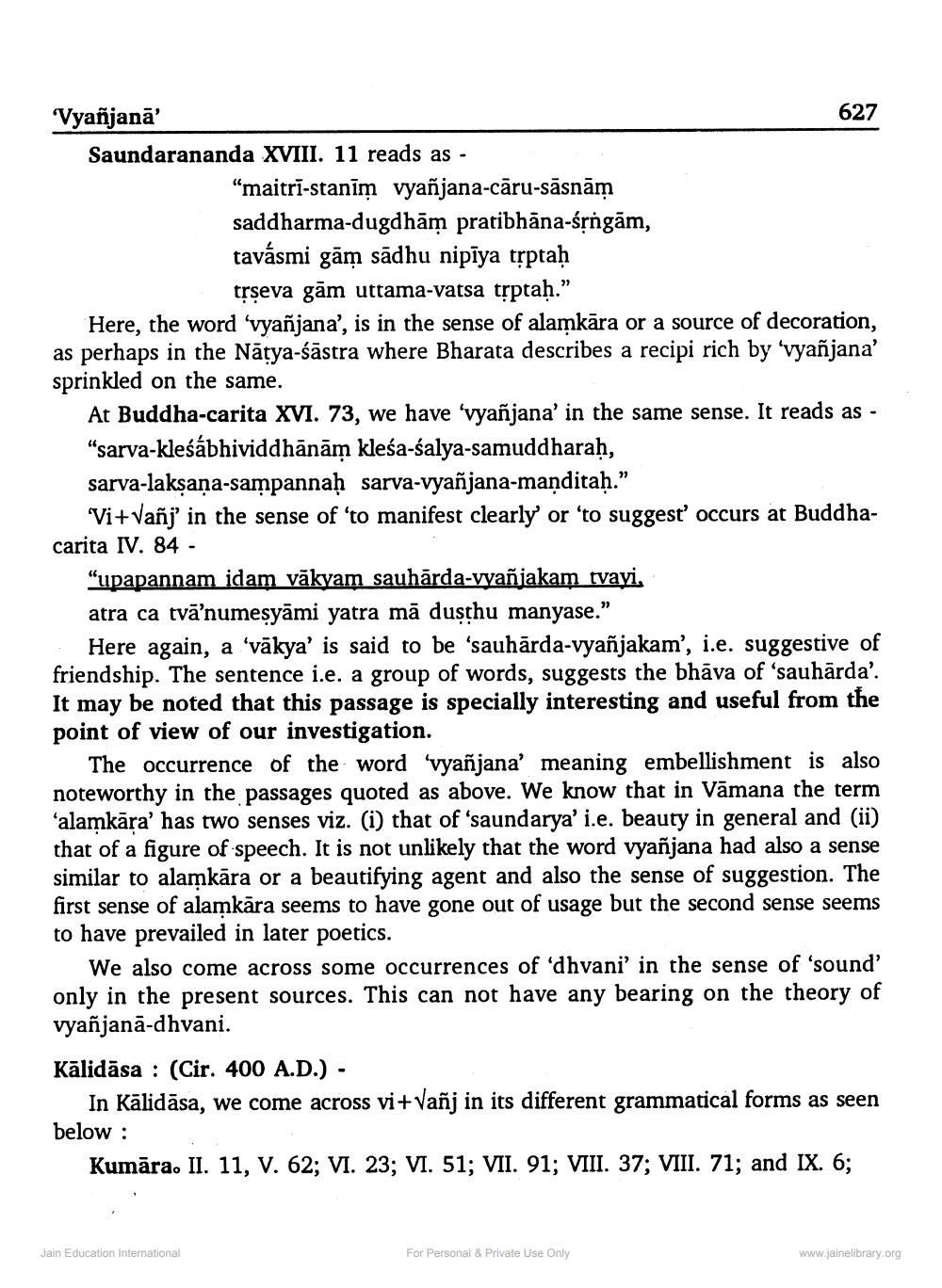________________
Vyañjanā'
627 Saundarananda XVIII. 11 reads as -
“maitri-stanīm vyañjana-cāru-sāsnām saddharma-dugdhām pratibhāna-śộngām, tavásmi gām sādhu nipīya tịptaḥ
trseva gām uttama-vatsa tịptah.” Here, the word 'vyañjana', is in the sense of alamkāra or a source of decor as perhaps in the Nātya-śāstra where Bharata describes a recipi rich by 'vyañjana' sprinkled on the same.
At Buddha-carita XVI. 73, we have 'vyañjana' in the same sense. It reads as - "sarva-klesábhividdhānām kleśa-salya-samuddharaḥ, sarva-laksaņa-sampannaḥ sarva-vyañjana-manditaḥ.”
Vi+Vañs in the sense of 'to manifest clearly' or 'to suggest occurs at Buddhacarita IV. 84.
"upapannam idam vākyam sauhārda-vyañjakam tvayi. atra ca tvā’numesyāmi yatra mā dusthu manyase.”
Here again, a 'vākya' is said to be 'sauhārda-vyañjakam', i.e. suggestive of friendship. The sentence i.e. a group of words, suggests the bhāva of 'sauhārda'. It may be noted that this passage is specially interesting and useful from the point of view of our investigation.
The occurrence of the word 'vyañjana' meaning embellishment is also noteworthy in the passages quoted as above. We know that in Vamana the term ‘alamkāra' has two senses viz. (i) that of 'saundarya' i.e. beauty in general and (ii) that of a figure of speech. It is not unlikely that the word vyañjana had also a sense similar to alamkāra or a beautifying agent and also the sense of suggestion. The first sense of alamkāra seems to have gone out of usage but the second sense seems to have prevailed in later poetics.
We also come across some occurrences of 'dhvani' in the sense of 'sound' only in the present sources. This can not have any bearing on the theory of vyañjanā-dhvani.
Kālidāsa : (Cir. 400 A.D.) -
In Kalidāsa, we come across vi+Vañj in its different grammatical forms as seen below :
Kumāra. II. 11, V. 62; VI. 23; VI. 51; VII. 91; VIII. 37; VIII. 71; and IX. 6;
Jain Education International
For Personal & Private Use Only
www.jainelibrary.org




